When you see a bug flying around near you, you might worry about it stinging you. Wasps, bees, and hornets are similar, it’s often hard to figure out which ones are around your home. An easy way to tell the type of bug plaguing you is with a look at bee vs wasp vs hornet key differences.
All bees, wasps, and hornets are apocritan, a suborder of insects. They all have 6-legs, narrow waists, and most have stingers. Bees are larger and hairier, less aggressive, and known for honey production. Wasps are more aggressive, can sting multiple times, and are predatory omnivores.
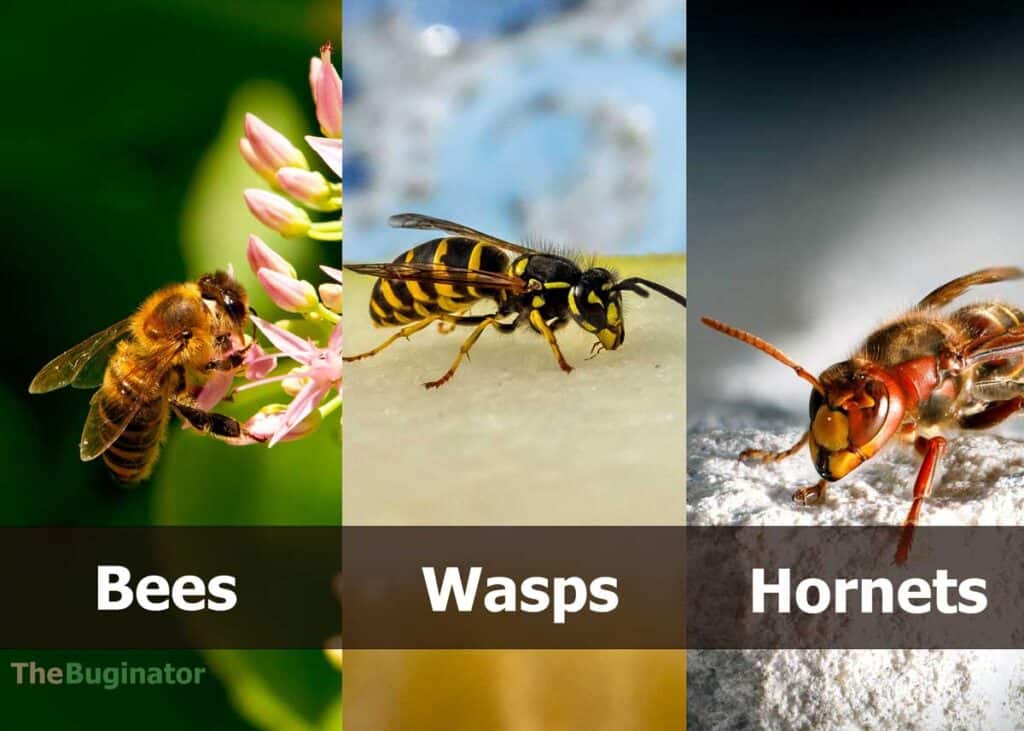
Table of Contents
Bee vs Wasp vs Hornet: 7 Similarities
1. Bees, wasps, and hornets are all insects, of the Apocrita suborder.
- Class: Insecta
- Order: Hymenoptera
- Unranked Classification: Unicalcarida
- Suborder: Apocrita
2. What insects are in the suborder Apocrita? Apocritan includes ants, spider wasps, aphid wasps, spider wasps, bees, paper wasps, hornets, and yellowjackets.
3. Wasp Waist: Wasps, bees, and hornets are distinguished by their narrow waist (petiole). Their narrow waist sets them apart from the sawfly (Symphyta).
4. Have Aculeatan Stingers: Wasps, hornets, and bees are all members of the subgroup Aculeata. This subgroup (subclade) is defined by the presence of the stinger in place of the ovipositor.
5. Six-Legged: As insects, bees, wasps, and hornets all have 6 legs and three thoracic segments.
6. Wasps and Bees Aren’t Bugs: As members of the Hymenoptera order, bees, wasps, and hornets aren’t bugs. Here’s how to tell a bug from an insect.
7. Hornets are Wasps: Hornets belong to the Vespidae family, along with wasps and yellowjackets.
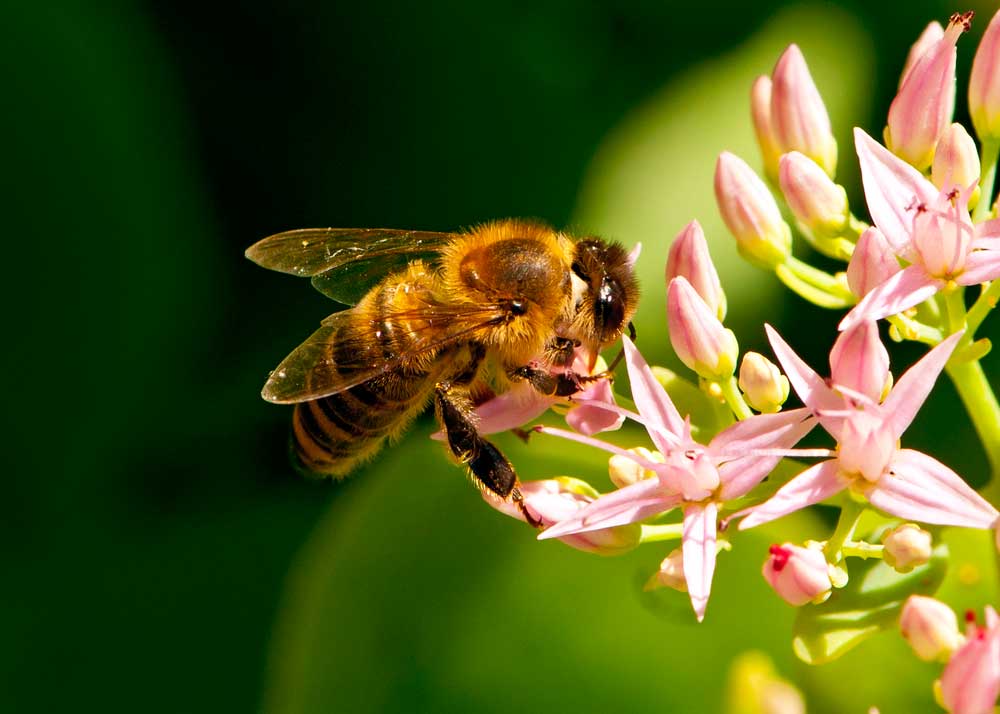
Bee vs Wasp vs Hornet: 8 Differences
1. Bees, wasps, and hornets belong to different families (and subfamilies).
- Bees: Apidae family (Clade Anthophila)
- Wasps: Vespidae family
- Hornets: Vespidae family (Vespinae subfamily)
2. Hairy Appearance: Bees are covered in soft, fine hairs on their legs and bodies. Contrast this with wasps and hornets that have almost no soft hairs. Honey bees use their hairs to collect and transport pollen.
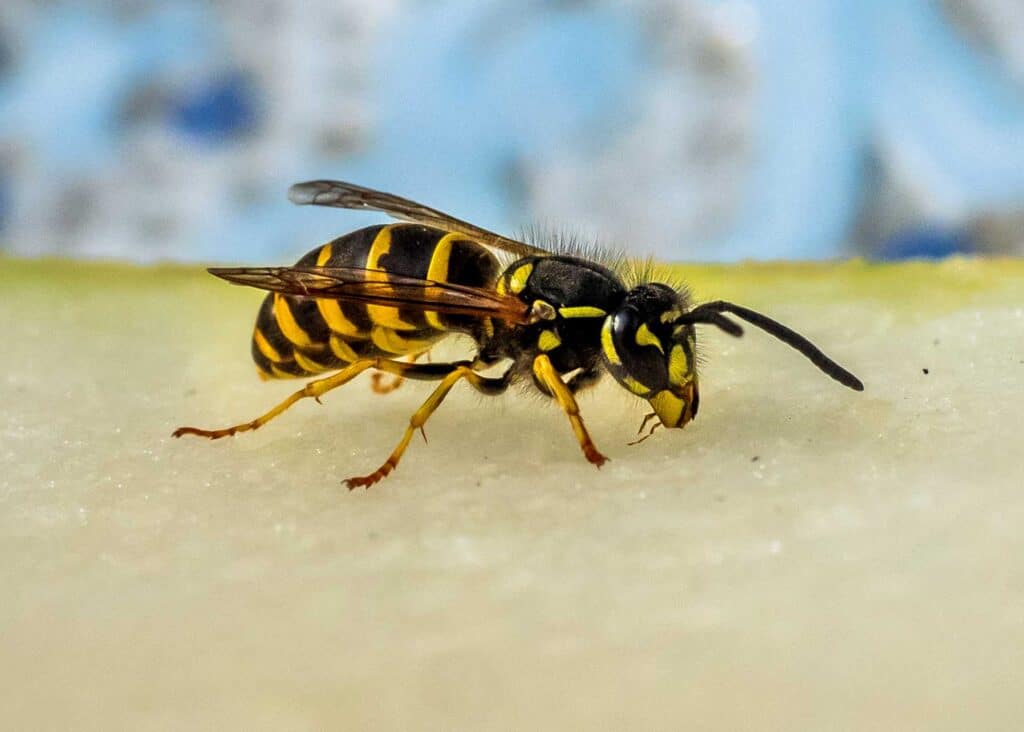
3. Size: Bees have bodies that are larger in circumference. Wasps have more slender bodies. Hornets also have slender bodies and are larger than bees and most wasps.
4. Stinging Ability: While bees and wasps (including hornets) typically have stingers, their ability is different. Bees are known to sting once, then die. Stinging wasps can often sting numerous times.
5. Aggressiveness: Bees typically only sting in self-defense. Wasps sting while hunting and in defense.
6. Some Bees Are Stingless: While most bees have stingers, there are some stingless species, especially in the family Andrenidae.
7. Honey Production: While some bees make honey, hornets do not. And while most wasps don’t make honey, some wasps do. Even bumblebees make a type of honey.
Generally speaking, only honey bees make honey for human consumption, with the exception of a couple of honey waps in Central and South America. Wasps generally don’t make honey. And hornets don’t make honey.
8. Diet: Bees are vegetarian, feeding on nectar, pollen, and honey. Wasps and hornets also eat other insects, including bees, in addition to nectar and pollen.
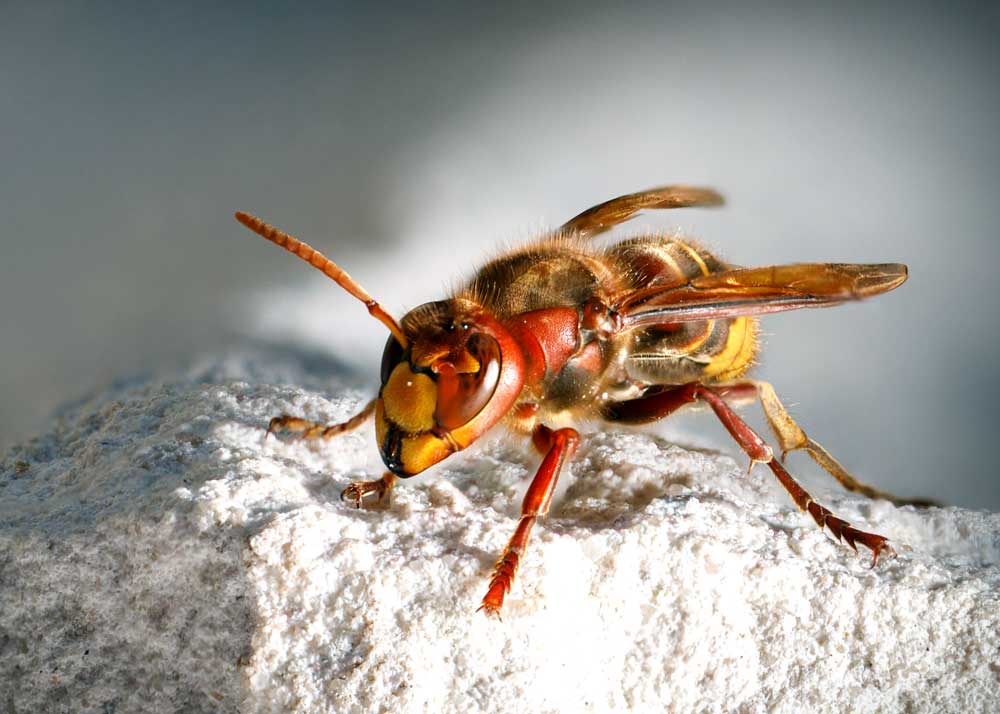
Reproductive Cycles of Bees, Wasps, and Hornets
“Each colony of these insects has a queen. The queen can give birth to between 1,000 and 30,000 offspring, depending on the conditions of her surroundings. If the nest is located in a cool, damp place with plenty of food, the number of offspring will be high.”
Government of Manitoba, Canada
Bee Facts
Bees are very similar to both hornets and wasps.
Honey bees are the most common type you’ll come across. They help pollinate the plants in your yard and produce honey, which they use as food.
At first, bee species look similar. Here’s how to tell them apart.
- Honey bee: If you see a bee that has orange and yellow bands with thick hair, it’s probably a honey bee.
- Bumble bee: Bees that have yellow and black stripes along with round bodies are bumblebees.
Where you find or see them depends on their type.
- While honey bees often create burrows in trees.
- Bumble bees prefer spots that are close to the ground such as old burrows created by animals.
- Carpenter bees prefer exposed timber. You might hear stories from people who found these bees living in their walls.
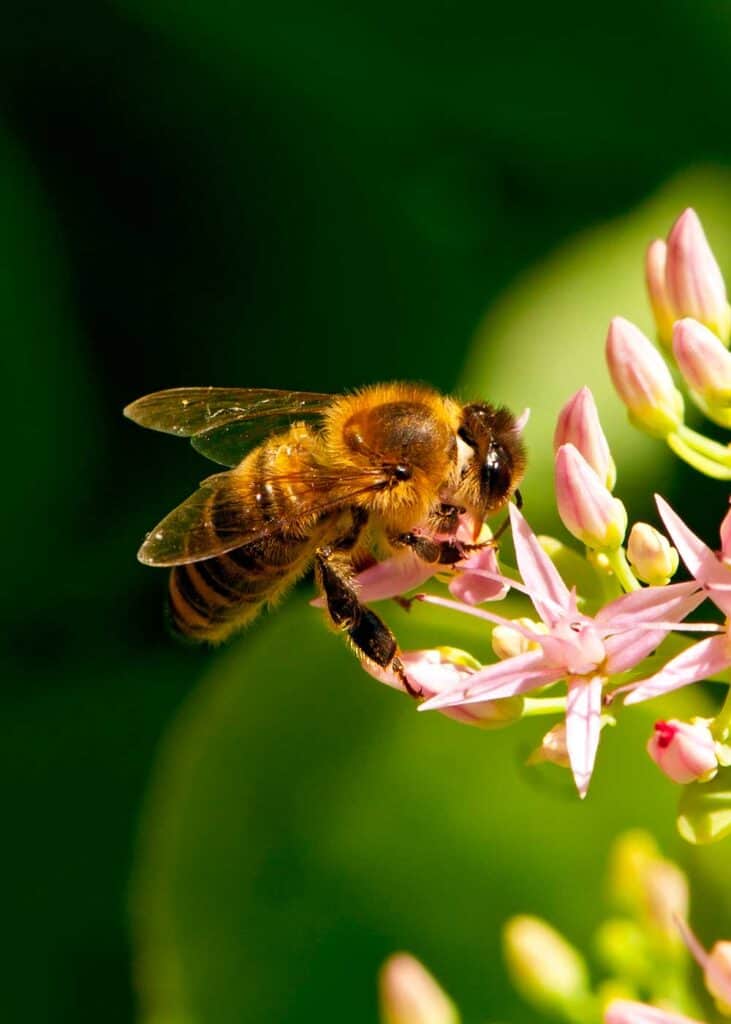
All types of stinging bees are potentially dangerous, especially to those with bee allergies.
When a bee stings you, you should notice some pain that occurs right after the attack. Bees have a thick stinger that they insert into your skin.
Once you’re stung, the stinger will leave the bee’s body. Until you pull the stinger out, you will keep feeling some pain because of the venom released by it. You may also notice some redness and swelling around the spot.
Those who are allergic to bees should always carry an EpiPen and see a doctor as soon as possible.
More reading: Beekeepers Explain: Do Bats Eat Bees?
Wasp Facts
Wasps and hornets are often confused. Hornets are actually a type of wasp.
A typical wasp is smaller than a hornet.
The most common types you’ll see in the United States are yellow jackets and paper wasps.
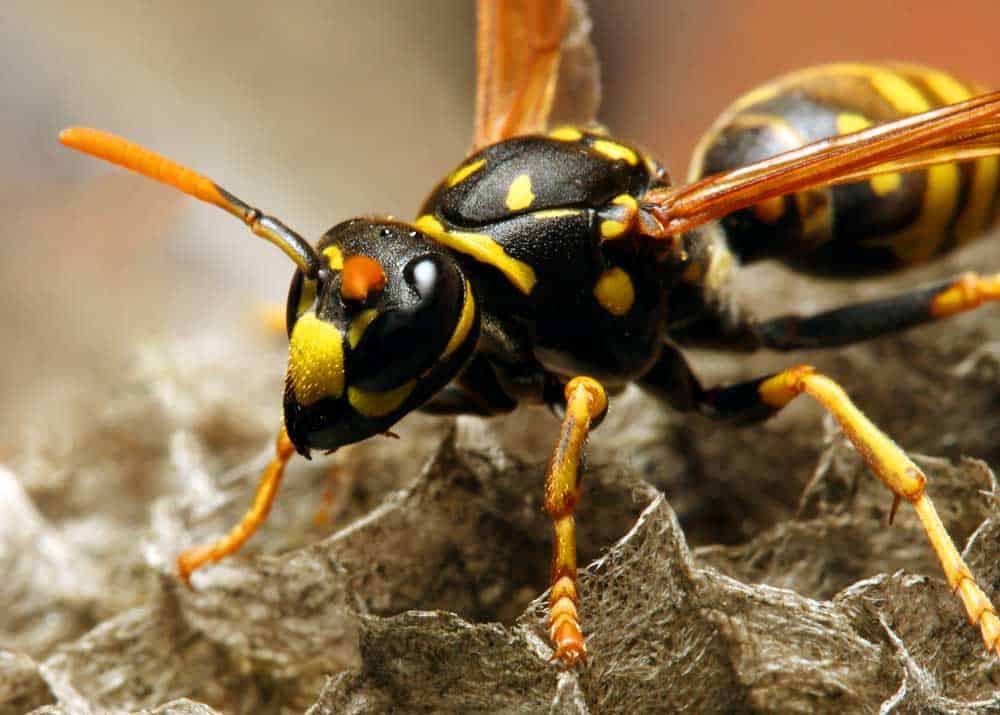
Wasps are usually solid black but may have some markings or stripes that are yellow, white, or orange.
They also have midsections that are thinner than the rest of their bodies. Most are one inch long or less.
8 Subfamilies of Wasps
Wasps are classified into the following subfamilies.
- Eumeninae (potter wasps)
- Euparagiinae
- Gayellinae
- Masarinae (pollen wasps)
- Polistinae (paper wasp)
- Stenogastrinae (hover wasp)
- Vespinae (yellowjackets, hornets)
- Zethinae (potter wasps)
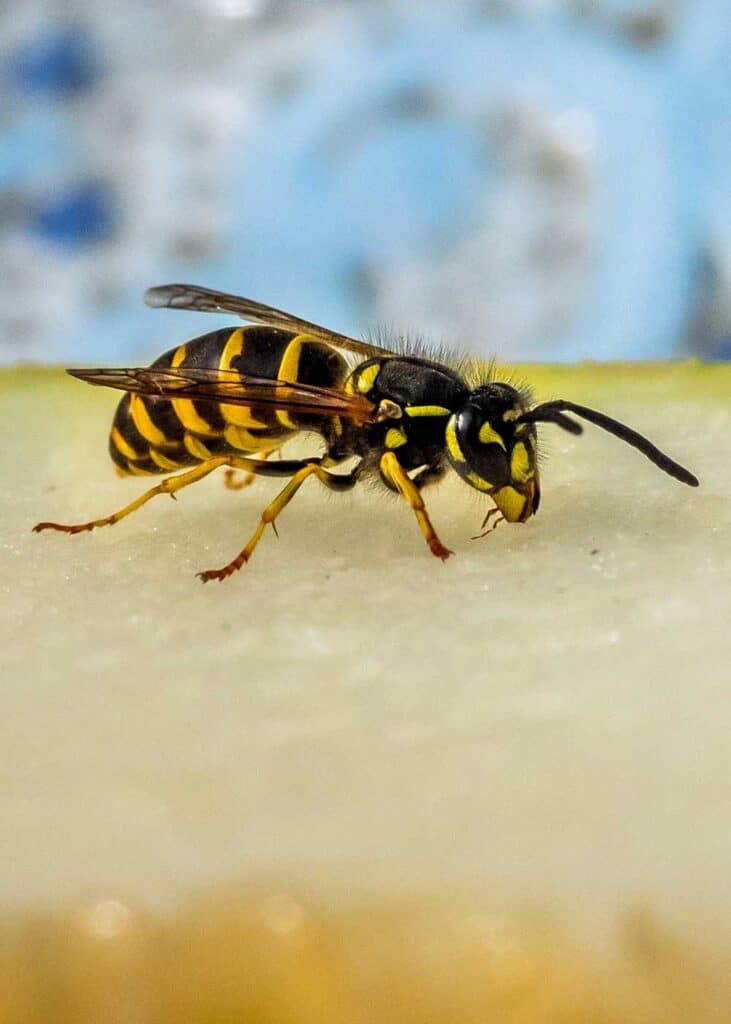
You can come across wasps in various areas of your yard.
- Yellowjackets prefer homes that are below ground and can take over old animal burrows. You may not even know you have any in your yard until you trip over their nest and they attack.
- Paper wasps look like tiny umbrellas hanging upside down and live on fences and in gutters. You can also find them in trees and bushes.
Learn more about how to identify the types of wasp nests.
Wasps can feed on the flowers and plants around your yard but will also seek out crumbs and spills if you eat outside.
Anyone who suffered a wasp attack knows that these bugs cause a lot of pain.
One notable difference between wasps and bees is that wasps will not lose their stingers when they attack.
They can sting you dozens of times before they leave and may follow you if you try to run. Wasp stings can cause swelling and pain, made worse if you have an allergy to the insects.
Curious what eats wasps? Here are 37 natural wasp predators.
Want to keep wasps away? Here are 17 essential oils that repel wasps.
Hornet Facts
Hornets are a type of insect that is part of the wasp family.
The biggest differences between the two are that hornets are larger and longer than wasps.
They are also the largest insects that sting humans.
- The bald-faced hornet is common in many parts of the country.
- Another common type is the brown hornet, which some call a giant hornet because of its size.
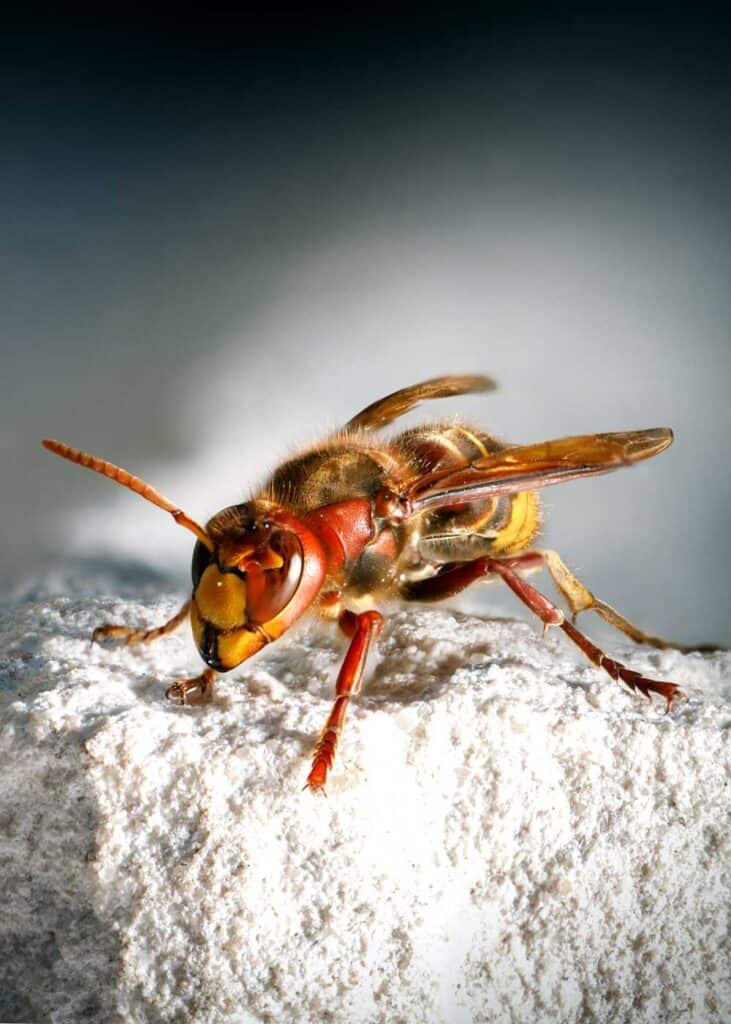
Hornets usually have a stomach that is red and/or brown and have some yellow stripes.
Bald-faced hornets are almost entirely black but have some white spots. The white spots on their faces make them appear as if they are bald.
You’ll find hornets in some of the same places where you see wasps.
- Some hornets like safe spaces in buildings and woodpiles. You might see them living in barns or in old trees.
- Other hornets live on fences and in trees as well as in bushes and plants. Hornets can also create homes on utility poles.
Similar to wasps, hornets will attack and can sting you multiple times because they do not release their stingers.
During each sting, they release venom into your skin, which causes redness and inflammation. If you have an allergy to hornet stings, you’ll likely develop redness around the spot and feel pain until you get help.
Hornets can also keep attacking as you attempt to flee.
Learn about what eats hornets.
Bee vs Wasp: 3 Comparison Questions
What’s the Difference Between Wasps and Bees?
Though wasps and bees are similar, they have some big differences.
Bees have thick hair over their bodies that make them appear fuzzy. When they pollinate plants, those hairs allow them to catch more pollen.
They can also use those hairs to collect more honey. Wasps appear shiny because they do not have these hairs and are also much longer and slimmer.
- Both wasps and bees consume different foods. Bees look for flowering plants and collect both nectar and pollen, much of which they take back to their hives.
- Wasps need a lot of protein, which they get from eating small insects. They eat those bugs and feed them to their kids.
After the females finish mating and laying eggs, their diets change to include more carbs and sugars. You may see wasps coming after food you eat outside.
Another thing to keep in mind is that they live in different types of homes. Bees use wax to form their homes and create hives that keep them safe from predators.
Wasps make their homes from paper or wood particles that they mix with their saliva before building.
Both bees and wasps live in the same homes for one year before they move. Some types of wasps will reuse the nests used by other wasps.
What’s the Difference Between Wasps and Hornets?
Hornets are part of the wasp family but are different insects.
While wasps are more aggressive than bees, hornets are more aggressive than both bees and wasps.
They can sting a person multiple times, and it’s possible for a single sting to be fatal.
- Though they have similar bodies, hornets are rounder and thicker and have black and white spots with a few pops of color.
- Wasps are longer and thinner and usually have wings in a bright color.
While wasps consume both plants and meats, hornets prefer plant matter. When their young are in the larva stage, the adults will break down insects into smaller parts to feed the babies.
Hornets are social and often live in large groups. When one attacks, the others often take part.
Though some wasps are also social, others are solitary and prefer to live on their own.
Though wasps can lay their eggs in other bugs, hornets build special nests and lay their eggs in them.
Learn more about a large type of wasp known as ground hornets (cicada killer).
What’s the Difference Between Bees and Hornets?
When you compare bees to hornets, you’ll find that bees have stout and round bodies.
- Hornets are typically larger and longer than bees. You’ll find that most bees have black bodies with stripes in colors that range from orange and yellow to tan.
- Carpenter bees are different because they can have pops of metallic blue or green.
- Hornets have bodies that are black and usually have stripes in yellow or red spots.
- Though bees appear fuzzy because of their thick hair, hornets appear shiny.
Both types of insects live in different places, too.
- Hornets prefer spaces that are dark, which is why you’ll see their nests in old trees or the eaves of your home. They can also live inside walls and attics.
- Bees can live in spaces made from untreated wood as well as underground.
Hornets are more aggressive and defensive. They may attack when you come too close to their nest.
Bees are not as aggressive. While bees lose their stingers as soon as they sting you, hornets retain their stingers and can sting multiple times.
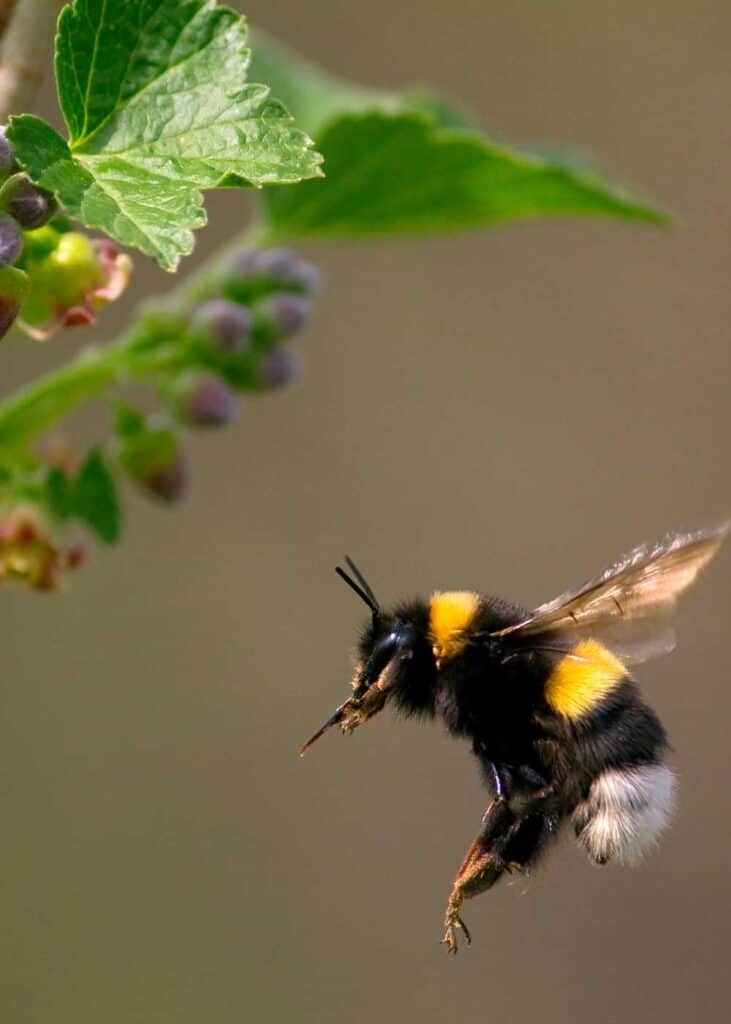
Wasp vs Bee vs Hornet
There are few things worse than suffering a sting unless it’s not knowing what stung you. With this guide, you can identify the flying insects you find in your year and on your travels.
Have a fact or story to share? Join me in the comments!
- About the Author
- Latest Posts
Bryan Haines is a co-founder and writer at The Buginator. And is working to make it the best resource for taking back the outdoors from biting, stinging pests.
He also blogs about travel at Storyteller.Travel and photography at Storyteller Tech. Bryan is a partner at Storyteller Media, a publishing company he runs with his wife, Dena.
